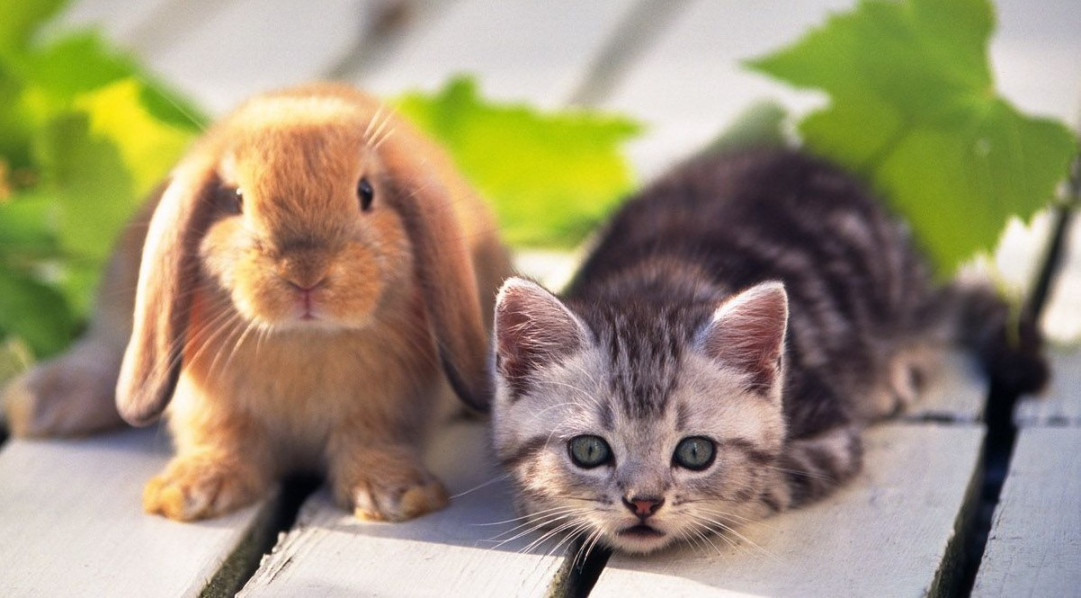Do Cats Get On With Rabbits?
For many pet owners, the idea of having different species of animals living together harmoniously is appealing. In particular, the idea of a fluffy feline coexisting with a cute rabbit can be quite enchanting. However, it is important to consider the natural instincts and behaviors of each species before introducing them to one another. This article will explore whether or not cats and rabbits can get along, and provide some tips for a successful introduction.

The Natural Instincts of Cats
Cats are natural predators. They have a strong hunting instinct and are known for their agility and speed. When a cat sees a small creature like a rabbit, its predatory instincts may kick in, causing it to chase or attack the rabbit. This is why it is crucial to approach the introduction of a cat and a rabbit with caution.
Introducing Cats and Rabbits
While it is possible for cats and rabbits to live together peacefully, a gradual and supervised introduction is necessary to ensure their safety and well-being. Here are some steps to follow when introducing a cat to a rabbit:
- Prepare separate living spaces: Before introducing the two animals, it is essential to provide them with separate living spaces. This will allow them to become familiar with their own territory and scent.
- Use scent swapping: Start by swapping their bedding or rubbing a cloth on one animal and placing it near the other. This will help them get used to each other’s scent without physical contact.
- Supervised face-to-face meetings: Once both animals are comfortable with each other’s scent, you can proceed to supervised face-to-face meetings. Keep the initial meetings short and gradually increase the duration over time.
- Positive reinforcement: Reward both the cat and the rabbit with treats and praise during their interactions. This will help them associate each other’s presence with positive experiences.
- Never force interactions: If either animal shows signs of distress or aggression, separate them immediately. It is essential to prioritize their safety above all else.
Tips for a Successful Coexistence
Even after a successful introduction, it is important to continue monitoring the relationship between the cat and the rabbit. Here are some tips for ensuring a successful coexistence:
- Provide separate food and water bowls for each animal to avoid competition.
- Allocate separate litter boxes for the cat and the rabbit.
- Offer plenty of hiding spots and elevated areas for both the cat and the rabbit to retreat to when they need alone time.
- Always supervise their interactions, especially during the initial stages of their relationship.
- Make sure both animals receive enough attention and love from their human companions to prevent them from feeling neglected.
It is crucial to approach the introduction of a cat and a rabbit with caution.
Frequently Asked Questions
1. Can all cats and rabbits get along?
No, not all cats and rabbits will be compatible. Some cats may have a strong prey drive, making it difficult for them to coexist peacefully with a rabbit. It is essential to evaluate the individual personality and behavior of each animal before attempting an introduction.
2. How long does it take for a cat and a rabbit to get along?
The time it takes for a cat and a rabbit to get along can vary depending on their individual personalities and the success of the introduction process. In some cases, it may take a few weeks, while in others, it may take several months. Patience and consistency are key.
3. Can I leave my cat and rabbit alone together?
It is generally not recommended to leave a cat and a rabbit alone together, especially in the early stages of their relationship. Always supervise their interactions to ensure their safety. Once they have established a positive and peaceful relationship, you can gradually increase the amount of time they spend together without direct supervision.
4. What are the signs of aggression or distress in cats and rabbits?
Signs of aggression in cats may include hissing, growling, swatting, and raised fur. In rabbits, aggressive behavior may manifest as lunging, biting, thumping, or boxing with their front paws. Signs of distress in both animals can include excessive hiding, refusal to eat or use the litter box, and vocalization.
Related Articles…
Copyright Notice:
All images on this website are obtained from the internet and remain copyrighted to their original owners. If you hold copyright to any image and want it taken down, please reach us.